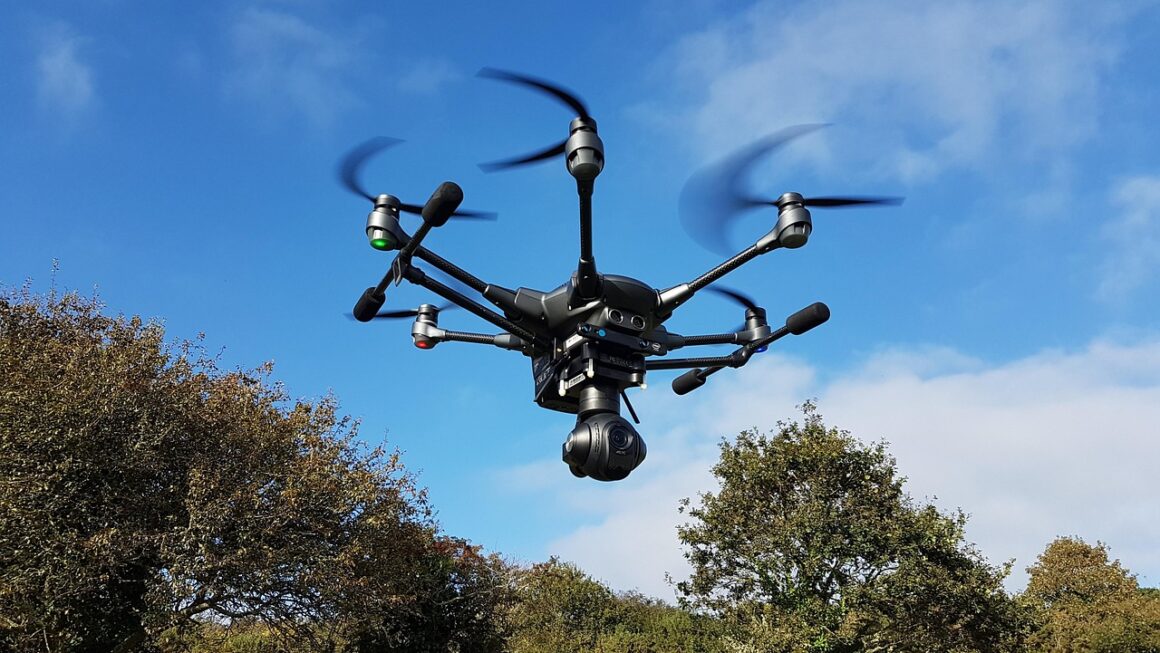Deep learning, a subfield of machine learning, has revolutionized various industries, from healthcare to finance, thanks to its ability to automatically learn complex patterns from vast amounts of data. At the heart of this revolution lie deep learning frameworks – powerful software libraries that provide the tools and infrastructure necessary to build, train, and deploy these sophisticated models. Choosing the right framework is crucial for a successful deep learning project, and this post will guide you through some of the most popular and impactful frameworks available today.
Understanding Deep Learning Frameworks
Deep learning frameworks are essentially software libraries that provide a high-level interface for building and training neural networks. They abstract away much of the low-level complexity involved in tasks like gradient computation, memory management, and distributed training. This allows researchers and developers to focus on the architecture and design of their models rather than the intricate details of implementation.
Key Features of Deep Learning Frameworks
- Automatic Differentiation: This is perhaps the most vital feature, allowing frameworks to automatically compute the gradients of a loss function with respect to the model’s parameters. This is crucial for optimization algorithms like gradient descent.
- GPU Acceleration: Deep learning models often require significant computational power. Frameworks provide support for leveraging GPUs (Graphics Processing Units) to accelerate training, often resulting in speedups of 10x or more.
- Pre-built Models and Layers: Frameworks offer a wide range of pre-built layers (e.g., convolutional layers, recurrent layers) and even pre-trained models that can be used as a starting point or for transfer learning.
- Model Deployment: Frameworks facilitate the process of deploying trained models for inference, often providing tools for exporting models to various formats that can be used on different platforms (e.g., mobile devices, web servers).
- Community Support: A vibrant and active community is essential for troubleshooting, sharing knowledge, and contributing to the framework’s development.
Popular Deep Learning Frameworks
While many frameworks exist, some have risen to prominence due to their features, performance, and community support. We’ll delve into some of the most popular ones in the following sections.
TensorFlow
TensorFlow, developed by Google, is one of the most widely used deep learning frameworks. It’s known for its flexibility, scalability, and production readiness.
TensorFlow: Key Features and Benefits
- Eager Execution: TensorFlow 2.0 introduced eager execution, which allows for more intuitive debugging and development compared to the earlier graph-based execution model.
- Keras Integration: Keras, a high-level API for building neural networks, is now fully integrated into TensorFlow, making it easier to define and train models. Example: `model = tf.keras.Sequential([tf.keras.layers.Dense(10, activation=’relu’, input_shape=(784,)), tf.keras.layers.Dense(10)])`.
- TensorBoard: A powerful visualization tool for monitoring training progress, debugging models, and visualizing data. You can view metrics like loss and accuracy in real time.
- TensorFlow Lite: A set of tools for deploying models on mobile and embedded devices.
- TensorFlow Extended (TFX): A production-ready machine learning platform for building and deploying end-to-end ML pipelines.
- Large Community and Resources: TensorFlow boasts a vast community, extensive documentation, and numerous online courses and tutorials.
TensorFlow: Practical Example
Let’s illustrate a simple image classification example using TensorFlow and Keras. We’ll use the MNIST dataset of handwritten digits.
“`python
import tensorflow as tf
# Load the MNIST dataset
(x_train, y_train), (x_test, y_test) = tf.keras.datasets.mnist.load_data()
# Preprocess the data
x_train = x_train.astype(‘float32’) / 255.0
x_test = x_test.astype(‘float32’) / 255.0
# Define the model
model = tf.keras.models.Sequential([
tf.keras.layers.Flatten(input_shape=(28, 28)),
tf.keras.layers.Dense(128, activation=’relu’),
tf.keras.layers.Dense(10, activation=’softmax’)
])
# Compile the model
model.compile(optimizer=’adam’,
loss=’sparse_categorical_crossentropy’,
metrics=[‘accuracy’])
# Train the model
model.fit(x_train, y_train, epochs=5)
# Evaluate the model
loss, accuracy = model.evaluate(x_test, y_test)
print(‘Accuracy: %.2f’ % (accuracy100))
“`
This code snippet demonstrates how easy it is to build, train, and evaluate a simple neural network using TensorFlow and Keras.
PyTorch
PyTorch, developed by Facebook’s AI Research lab, has gained significant popularity in recent years, particularly within the research community, for its flexibility, ease of use, and strong support for dynamic computation graphs.
PyTorch: Key Features and Benefits
- Dynamic Computation Graphs: PyTorch uses dynamic computation graphs, meaning that the graph is built during runtime, offering greater flexibility and ease of debugging compared to static graphs.
- Pythonic API: PyTorch’s API is highly Pythonic, making it intuitive for Python developers to learn and use.
- Strong GPU Acceleration: PyTorch provides excellent GPU acceleration through CUDA support.
- Active Community and Research Focus: PyTorch has a thriving community, particularly within the research community, and is often preferred for research projects due to its flexibility.
- PyTorch Lightning: A lightweight wrapper around PyTorch that helps streamline the training process and reduce boilerplate code.
- TorchServe: A flexible and easy to use tool for deploying PyTorch models at scale.
PyTorch: Practical Example
Here’s a PyTorch example for the same MNIST image classification task:
“`python
import torch
import torchvision
import torchvision.transforms as transforms
import torch.nn as nn
import torch.nn.functional as F
import torch.optim as optim
# Data loading and preprocessing
transform = transforms.Compose(
[transforms.ToTensor(),
transforms.Normalize((0.5,), (0.5,))])
trainset = torchvision.datasets.MNIST(root=’./data’, train=True,
download=True, transform=transform)
trainloader = torch.utils.data.DataLoader(trainset, batch_size=4,
shuffle=True, num_workers=2)
testset = torchvision.datasets.MNIST(root=’./data’, train=False,
download=True, transform=transform)
testloader = torch.utils.data.DataLoader(testset, batch_size=4,
shuffle=False, num_workers=2)
# Define the model
class Net(nn.Module):
def __init__(self):
super().__init__()
self.conv1 = nn.Conv2d(1, 6, 5)
self.pool = nn.MaxPool2d(2, 2)
self.conv2 = nn.Conv2d(6, 16, 5)
self.fc1 = nn.Linear(16 4 4, 120)
self.fc2 = nn.Linear(120, 84)
self.fc3 = nn.Linear(84, 10)
def forward(self, x):
x = self.pool(F.relu(self.conv1(x)))
x = self.pool(F.relu(self.conv2(x)))
x = torch.flatten(x, 1) # flatten all dimensions except batch
x = F.relu(self.fc1(x))
x = F.relu(self.fc2(x))
x = self.fc3(x)
return x
net = Net()
# Define the loss function and optimizer
criterion = nn.CrossEntropyLoss()
optimizer = optim.SGD(net.parameters(), lr=0.001, momentum=0.9)
# Training loop
for epoch in range(2): # loop over the dataset multiple times
running_loss = 0.0
for i, data in enumerate(trainloader, 0):
# get the inputs; data is a list of [inputs, labels]
inputs, labels = data
# zero the parameter gradients
optimizer.zero_grad()
# forward + backward + optimize
outputs = net(inputs)
loss = criterion(outputs, labels)
loss.backward()
optimizer.step()
# print statistics
running_loss += loss.item()
if i % 2000 == 1999: # print every 2000 mini-batches
print(‘[%d, %5d] loss: %.3f’ %
(epoch + 1, i + 1, running_loss / 2000))
running_loss = 0.0
print(‘Finished Training’)
#Evaluation
correct = 0
total = 0
with torch.no_grad():
for data in testloader:
images, labels = data
outputs = net(images)
_, predicted = torch.max(outputs.data, 1)
total += labels.size(0)
correct += (predicted == labels).sum().item()
print(‘Accuracy of the network on the 10000 test images: %d %%’ % (
100 correct / total))
“`
This illustrates the PyTorch workflow, involving data loading, model definition, loss function and optimizer selection, and the training loop.
Other Notable Deep Learning Frameworks
While TensorFlow and PyTorch dominate the landscape, other frameworks offer unique advantages and cater to specific needs.
Keras
- High-Level API: Keras is a high-level API that runs on top of TensorFlow, Theano, or CNTK, providing a simplified interface for building and training neural networks. While it’s fully integrated within TensorFlow now, it can still be used with other backends.
- Focus on User Experience: Keras emphasizes ease of use and rapid prototyping, making it a good choice for beginners.
- Modularity and Extensibility: Keras allows for easy customization and extension, enabling users to create custom layers and models.
MXNet
- Scalability and Performance: MXNet is designed for scalability and performance, making it suitable for large-scale distributed training.
- Multiple Language Support: MXNet supports multiple programming languages, including Python, Scala, R, and C++.
- Gluon API: MXNet’s Gluon API provides a more user-friendly interface, similar to Keras and PyTorch.
Choosing the Right Framework: Factors to Consider
Selecting the optimal framework hinges on several crucial factors:
- Project Requirements: The complexity and scale of your project should be a primary consideration. TensorFlow and MXNet are suitable for large-scale deployments, while Keras and PyTorch are well-suited for rapid prototyping and research.
- Team Expertise: The existing skill set of your team will influence the learning curve and overall productivity. If your team is proficient in Python, PyTorch or Keras might be a good starting point.
- Community Support: A strong community provides valuable resources for troubleshooting and knowledge sharing. TensorFlow and PyTorch have the largest communities, followed by Keras and MXNet.
- Hardware Infrastructure: The availability of GPUs and the need for distributed training will impact your choice. All the mentioned frameworks support GPU acceleration, but some may be better optimized for specific hardware configurations.
- Deployment Requirements: Consider where your model will be deployed (e.g., mobile devices, cloud servers) and choose a framework that offers suitable deployment tools and support.
Conclusion
Deep learning frameworks are indispensable tools for building and deploying intelligent systems. TensorFlow and PyTorch are the leading frameworks, each with its strengths and weaknesses. Keras provides a high-level API for rapid prototyping, while MXNet excels in scalability. By carefully considering your project requirements, team expertise, and deployment environment, you can select the framework that best empowers you to unlock the full potential of deep learning. Remember to stay updated with the latest developments in the field, as these frameworks are constantly evolving with new features and improvements.




